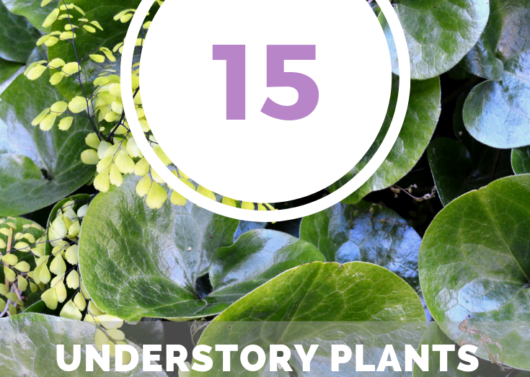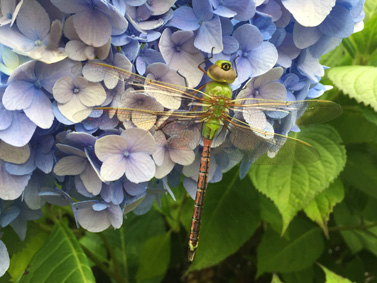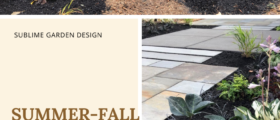Understory Plants
Planting underneath trees can get tricky and depends on how much shade the tree provides along with how moist the soil is. If you’ve ever looked under a well-established oak or maple, you might have noticed that the ground is bare of any plant material. Most lawn usually can’t survive under a tree because of the amount of shade and sometimes a lack of water, but there are many plants that can thrive in the understory of your garden. It’s best to plant when you’re also planting the tree but if you’ll be planting under an already established tree, you’ll want to be careful not to damage its roots.
Barrenwort (Epimedium rubrum)- An evergreen to semi-evergreen groundcover that grows 12-15”. It has green, heart shaped foliage with tinges of red along the outside. Yellow flowers appear in early spring. It can tolerate drought once established but it will appreciate supplemental water during longer dry spells.
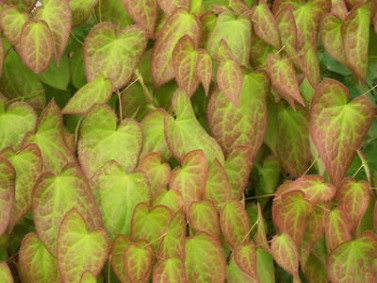
Coppertina Ninebark (Physocarpus opulifolious ‘Coppertina’)- Coppery colored foliage in spring turns to rich red with light pink flowers in summer. This deciduous shrub also has red seed capsules, exfoliating bark and is said to have the longest lasting fall color. You can find other Ninebarks in other shades of dark burgundy along with bright green and golden yellow so you can choose just the right one to fit into your space.
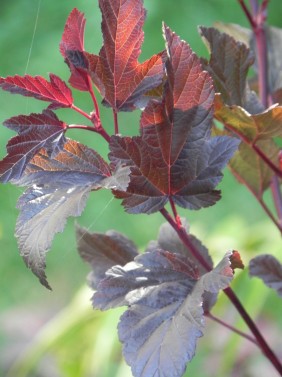
Japanese Forest Grass (Hakonechloa macra)- This deciduous grass comes in various shades of green to bright golden yellow which brightens up any understory. The foliage arches out of the clumps creating an interesting texture and slowly spreads by rhizomes so it naturalizes very well.
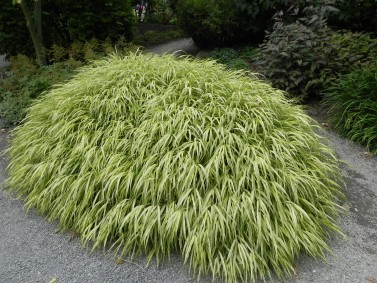
Japanese Painted Fern (Athyrium niponicum ‘Pictum’)- The Japanese Painted Fern has silver fronds which are accented with purple and blue-green tones. The dark, purplish stems add a nice contrast to the foliage.

Black Beauty Bugbane (Cimicifuga simplex ‘Hillside Black Beauty’)- The burgundy bronze, almost black, foliage is a nice addition to the understory garden. Tall, creamy white flower spikes bloom in autumn.
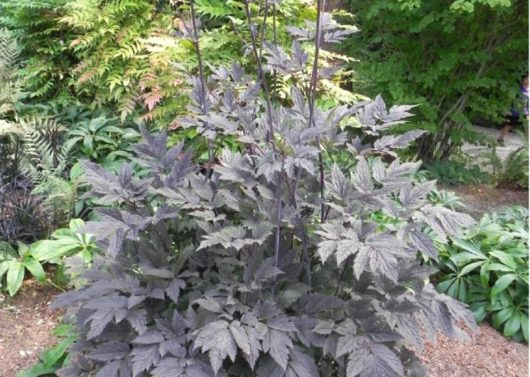
Lungwort (Pulmonaria)- This is a great substitute for Deadnettle. It has green, silver spotted foliage with pink to purple flowers in early spring. You can find other varieties of Pulmonaria with different amounts of silvering on the foliage.
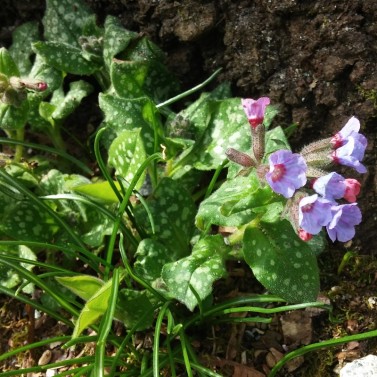
Plantain Lily (Hostas)- With their large undulating leaves and striking colorings, hostas stand out in any shade garden. Flower stalks rise in summer in shades of purple and white.
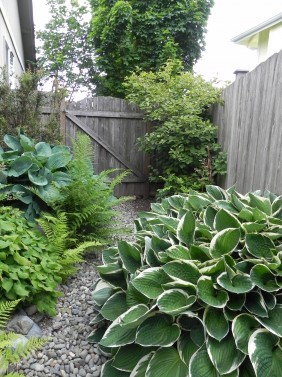
Coral Bells (Heuchera)- Heuchera foliage comes in all shades of colors and multicolored varieties as well. With a good frost the leaves really sparkle. While it won’t bloom until early summer, this small mounding evergreen is a great addition to the winter garden. Heucheras do best in filtered to full sun and avoid extra winter moisture. To see a small sampling of the different kinds, click here.
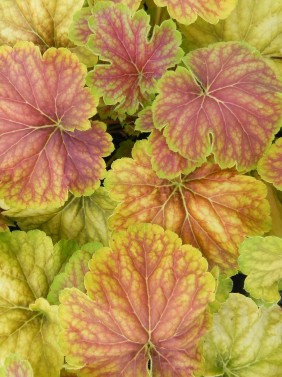
Bleeding Heart (Dicentra)- The heart shaped flowers come in reds, pinks, purples, and white which all attract hummingbirds. This plant isn’t just about its blooms though. Depending on the cultivar, the deciduous foliage can be rich green to golden to blue-green. Some even have dainty foliage that resembles ferns providing an interesting texture in the garden. Bleeding Hearts prefer full shade to partial sun and like to be watered regularly, especially in times of extreme heat. Try to avoid placing in constantly wet or soggy soils.
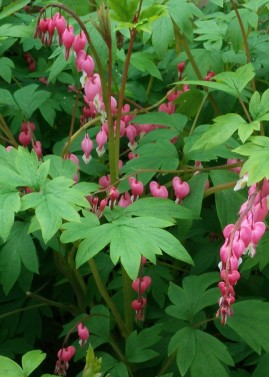
Bulbs- Bulbs such as Daffodils, Crocus, and Iris work great for under story plants and can add much needed color to shady areas. Because of their size, bulbs also work well around tree roots since they don’t require a ton of room to be planted. They also work great for cut flower arrangements.

Japanese Spurge (Pachysandra terminalis)- This evergreen, spreading groundcover gets to be 6-8” tall and wide and has white flowers in spring. Although it does well in partial dry shade, it might not flower in full shade. The fresh green foliage provides a nice texture to the understory.

Solomon’s Seal (Polygonatum odoratum)- Solomon’s Seal has graceful, arching stems with glossy green foliage. In spring, it has fragrant, greenish white flowers that hang from the reddish stems. You can also find this in a variegated form.
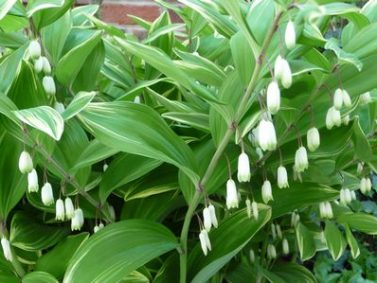
Wild Ginger (Asarum caudatum)- A NW native evergreen groundcover that grows 4-6” tall. Wild Ginger does great in part to full shade gardens and adapts well to dry conditions once established. It can be grown in sandy soils with great success once established.
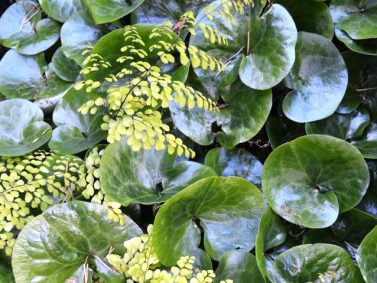
Jack Frost Siberian Bugloss (Brunnera macrophylla ‘Jack Frost’)- This herbaceous perennial has green, heart shaped foliage overlaid with a silvery lacework pattern. Small, light blue flowers rise above the foliage and add even more color in the spring. Works well as a groundcover or as an accent plant. Read more about this plant here.
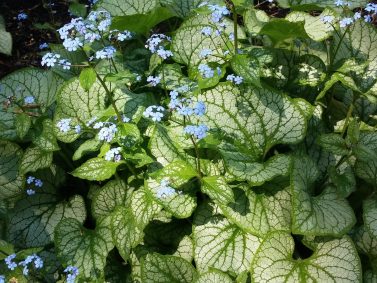
Foam Flower (Tiarella)- A close relative of Heuchera’s (Coral Bells), Foam Flowers have clumps of foliage which resemble oak leaves or Heuchera leaves. Some are green and others have different colored veining or splashes of colors on them making them perfect for brightening up shaded areas. The spikes of white-pale pink flowers appear in spring and rise above the foliage.
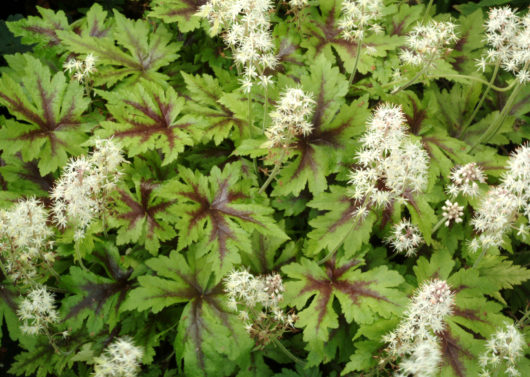
What do you like planting in the understory of your garden? What are your tried and true plants for dry shade? Let us know in the comments, we’d love to hear from you!
Organized under Gardens, Plants I Dig, Shade Gardens. Labeled as asarum caudatum, athyrium niponicum pictum, barrenwort, black beauty bugbane, bleeding heart, brunnera, brunnera macrophylla jack frost, bulbs, cimicifuga, coral bells, crocus, daffodils, dicentra, epimedium, foam flower, hakonechloa macra, Heuchera, hosta, iris, jack frost siberian bugloss, japanese forest grass, japanese painted fern, japanese spurge, lungwort, ninebark, pachysandra terminalis, physocarpus, plantain lily, plants for under trees, polygonatum odoratum, pulmonaria, rubrum, solomon's seal, tiarella, understory plants, what to plan under trees, what to plant near tree roots, wild ginger.
